Spline Creation and Editing
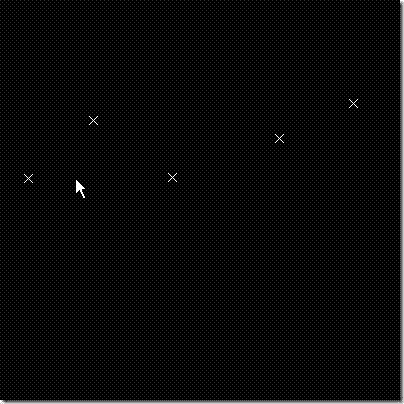
Path: Insert | Wireframe | Spline
 Located in a fly-out on the Wireframe toolbar.
Located in a fly-out on the Wireframe toolbar.
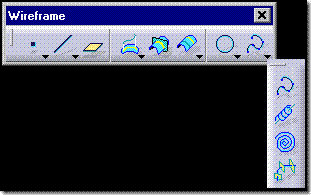
Use this to ...
- Create a spline in 3D space.
Key Points
- Unlike the Sketcher spline command, you need existing construction geometry before you can access the Spline dialog,

Prerequisites
- You should be in the Generative Shape Design workbench
Process: Creating Splines Through Existing Points
1. Select Insert | Wireframe | Spline. The Spline Definition dialog displays.
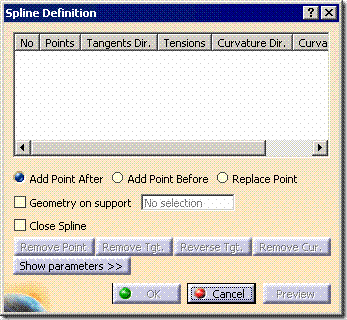
2. In the Graphics window, pick the first point that the spline passes through.
3. As necessary, click Show Parameters to expand the dialog.
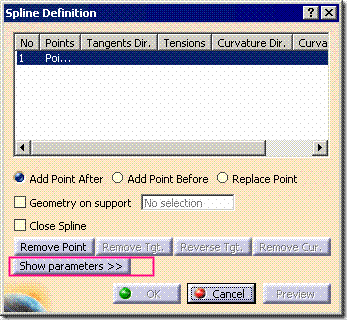
4. As necessary choose an element you may want to define as a direction of tangency coming off of the point. If you choose a plane then the type will automatically switch to Explicit in the Constraint type list.
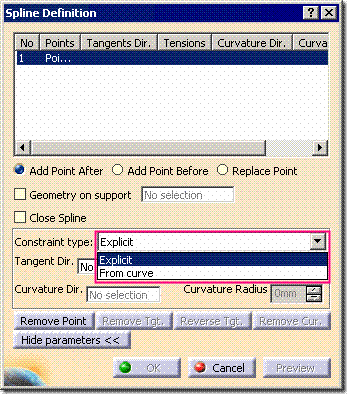
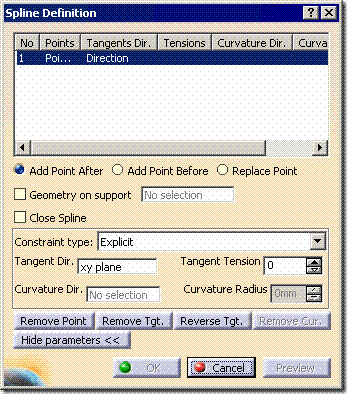
Or
If you choose a line then the type will automatically switch to From Curve in the Constraint type list.
5. As necessary in the Tangent Tension text box, enter the tension value coming off of the point in the tangency direction. If you had chosen a plane then the tension would default to 0, if you had chosen a line then the tension value would default to 1.
6. The Curvature Dir. box will become active.
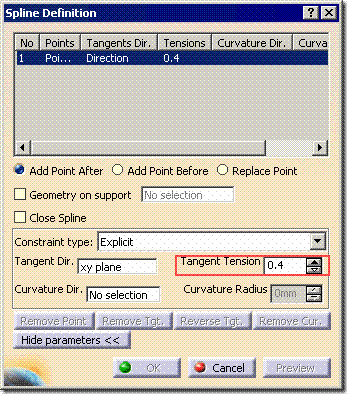
7. As necessary in the Curvature Direction box. Then in the Graphics window, pick any curve as the curvature reference.
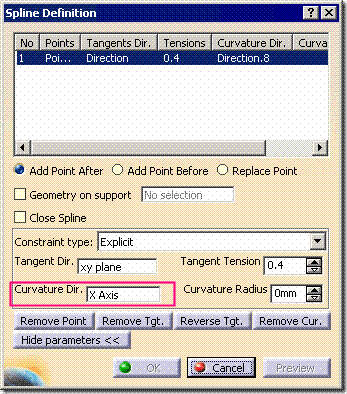
8. In the Curvature Radius text box, enter the required radial curvature value for the value of curvature at that point on the spline curve.
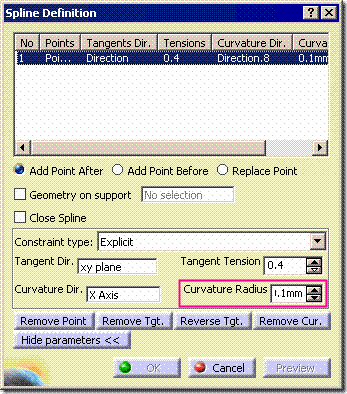
9. In the Graphics window, pick the next point that the spline passes through.
10. Continue to define the tangency and curvature for the second point, if required.
11. Continue to define points and their associated tangencies and curvature.
12. Click OK to create the spline.